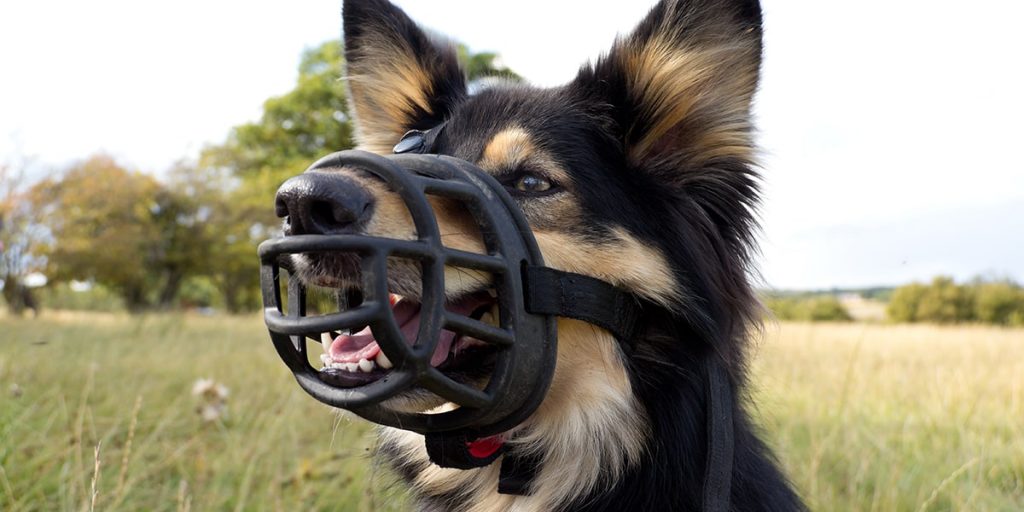Occasionally a dog may need to wear a muzzle to avoid biting (usually if painful or scared), licking/chewing a wound or eating objects they shouldn’t. It is not uncommon for your dog to require a muzzle whilst at the vet as we are often performing painful or potentially scary exams.
It’s important your dog allows muzzle placement comfortably and does not see this as a negative event. This is where we ask you to do a little bit of homework so that they are prepared for muzzle placement (if the need arises) when visiting us. We recommend basket muzzles that when fitted appropriately still allow panting, drinking and eating of treats.
How to desensitise your dog to a muzzle (note this may take longer if your pet has had a previous negative experience with a muzzle):
- Purchase a muzzle.
- Wait for a time your pet is hungry (e.g. just before a meal).
- Prepare your dog’s favourite treats and something spreadable (e.g. cream cheese or peanut butter) and find a quiet spot in the house with no distractions.
- Slather the inside and outside of the front of the muzzle with the spreadable treat and allow your pet to lick it all off. Repeat this 1-2 times daily until they confidently approach the muzzle.
- Once the dog is confidently approaching when they see the muzzle, encourage them to place their snout in the muzzle. Poke treats through the holes to encourage them to keep their snout in place.
- Repeat this 1-2 times daily and each time aim for a slightly longer duration (and a happy dog).
- After your dog can hold their snout there happily for 30 seconds, do the clasp up (tight enough that the dog cannot pull the muzzle off). Remove after 10 seconds of the clasp being secured. Do not feed any more treats after the muzzle is removed.
- Repeat this at least once daily until your dog comfortably wears the muzzle without attempting to dislodge it. Gradually increase the duration of wearing the muzzle.
- Once they are comfortable start to take your dog on short adventures whilst wearing the muzzle e.g. around the block or on a short car ride. Ensure this remains a positive experience and continue using treats.
- Once they are comfortable wearing it out and about, complete a few “happy vet (or groomer) visits” i.e. drop in for treats and pats without any negative events.
- They are now ready to wear the muzzle to the vet. Continue to practice with them regularly.
For more information watch this:



